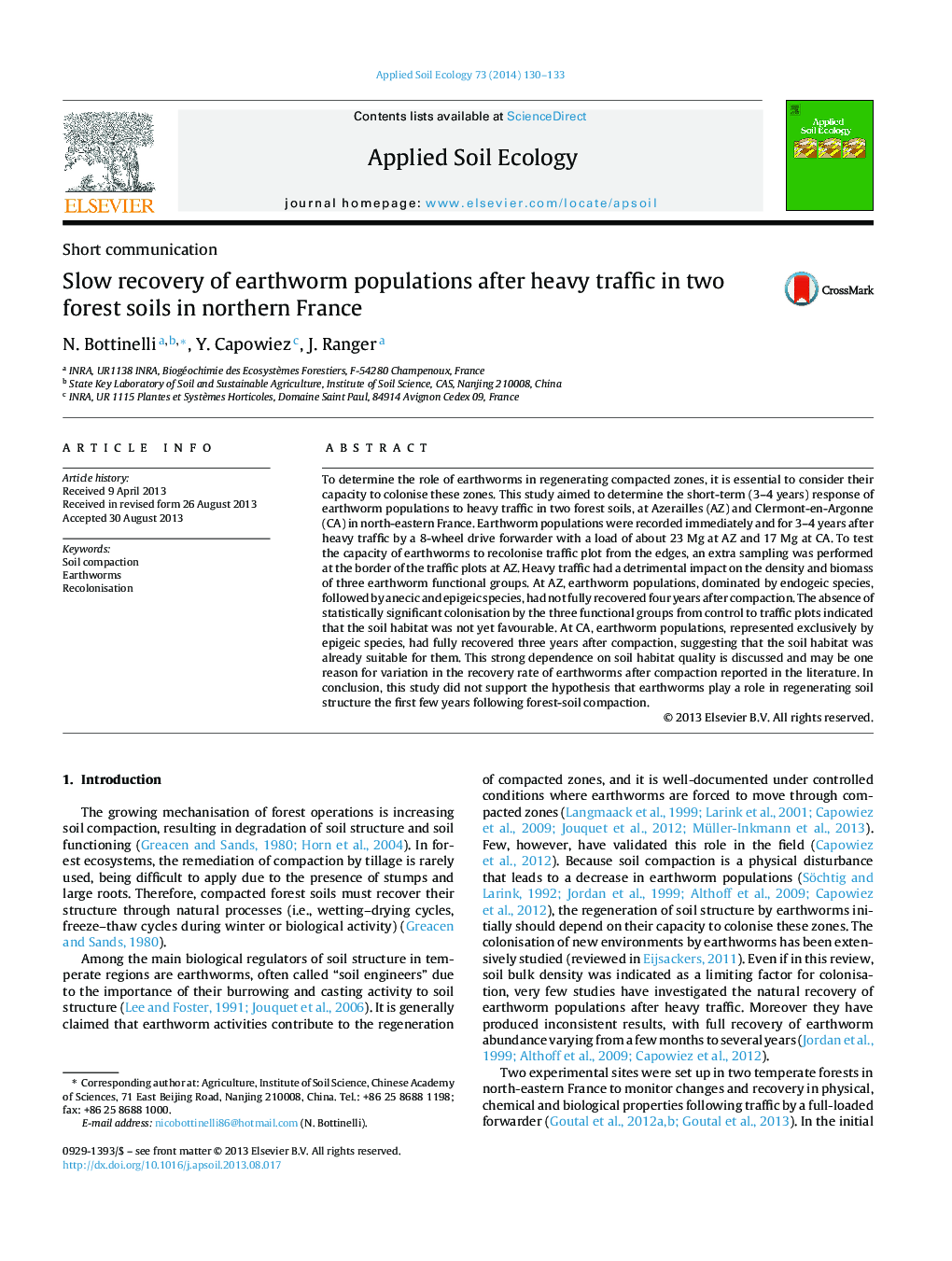| Article ID | Journal | Published Year | Pages | File Type |
|---|---|---|---|---|
| 4382376 | Applied Soil Ecology | 2014 | 4 Pages |
•Density and biomass of earthworms decreased dramatically after heavy traffic.•Earthworm population recovery depended on the presence of a suitable habitat.•The role of earthworms in regenerating compacted soils was not significant after 3–4 years.
To determine the role of earthworms in regenerating compacted zones, it is essential to consider their capacity to colonise these zones. This study aimed to determine the short-term (3–4 years) response of earthworm populations to heavy traffic in two forest soils, at Azerailles (AZ) and Clermont-en-Argonne (CA) in north-eastern France. Earthworm populations were recorded immediately and for 3–4 years after heavy traffic by a 8-wheel drive forwarder with a load of about 23 Mg at AZ and 17 Mg at CA. To test the capacity of earthworms to recolonise traffic plot from the edges, an extra sampling was performed at the border of the traffic plots at AZ. Heavy traffic had a detrimental impact on the density and biomass of three earthworm functional groups. At AZ, earthworm populations, dominated by endogeic species, followed by anecic and epigeic species, had not fully recovered four years after compaction. The absence of statistically significant colonisation by the three functional groups from control to traffic plots indicated that the soil habitat was not yet favourable. At CA, earthworm populations, represented exclusively by epigeic species, had fully recovered three years after compaction, suggesting that the soil habitat was already suitable for them. This strong dependence on soil habitat quality is discussed and may be one reason for variation in the recovery rate of earthworms after compaction reported in the literature. In conclusion, this study did not support the hypothesis that earthworms play a role in regenerating soil structure the first few years following forest-soil compaction.
